The current level of development of the electronics industry makes it possible to supplement everyday life with a variety of devices that are installed instead of traditional ones. Now no TV is produced without a remote control device. Many household devices can also be controlled remotely. Lighting remote control switches are no exception.
Devices for non-contact switching of lighting can be with automatic and manual control. The first includes all kinds of sensors:
- optical;
- thermal;
- radio wave;
- sound;
- ultrasonic.
Motion sensors come in various types. Such devices do not have a wide domestic use, more often they are used in industries, various enterprises, offices.
Types of remote switches
Light switches equipped with a remote control deserve more detailed consideration. Now on sale you can find a variety of switches, the operation of which is based on various principles for transmitting control signals:
- infrared;
- radio-controlled;
- radio-controlled via Bluetooth protocol;
- radio-controlled via Wi-Fi protocol.
Infrared switches
Technologically, the simplest are infrared switches. They are the ones that are free to use. Now the functionality of infrared control systems has been significantly expanded, but their market share is gradually declining. First of all, this is due to the fundamental limitations in operation - the need to find the transmitter and receiver in direct line of sight with each other and a short range. Also, such devices are characterized by unstable operation in conditions of extraneous exposure to sunlight. Modern models of infrared switches can be operated from the TV remote control. To do this, when you turn it on for the first time, the switch is programmed so that it works when you press a certain button on the TV remote control.
Radio controlled switches
There are no such restrictions radio-controlled switches. The range of such systems is limited only by the power of the transmitter in the remote control and the sensitivity of the receiver in the actuator, it can reach hundreds of meters. Since radio waves can be reflected from objects and bend around them, the presence of walls and ceilings only reduces the maximum range, but up to certain limits it is not an obstacle.
The principle of operation of radio-controlled devices is to transmit a high-frequency signal modulated by control pulses. Since the pulse shapers are built on digital microcontrollers, it is possible to program remotes and switches. Each remote control has its own individual digital code, which is transmitted along with the control signal. Thus, different remotes do not create mutual interference, even when operating at the same frequency.
This is what a switch with radio remote controls might look like:
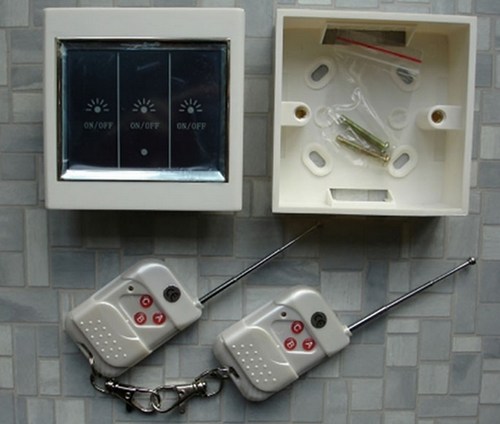
Switch with Bluetooth control
Wireless communication based on communication protocol Bluetooth allows you to control devices at distances up to 100 m. As a lighting control panel, you can use a smartphone, tablet or any other gadget with the appropriate program, as well as a remote control designed to control switches.
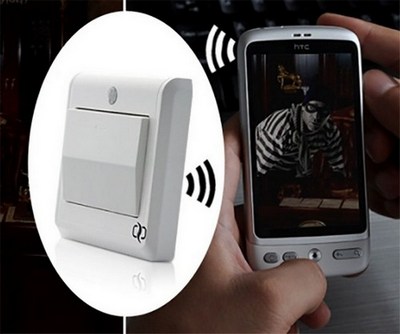
WiFi switch
The most advanced devices work according to the protocol WiFi. Developed for computer networks, this data exchange protocol makes it possible to implement the concept of "Smart Home". In a smart home, all household devices are connected to a common network and allow control from anywhere, both through wireless devices and via the Internet.
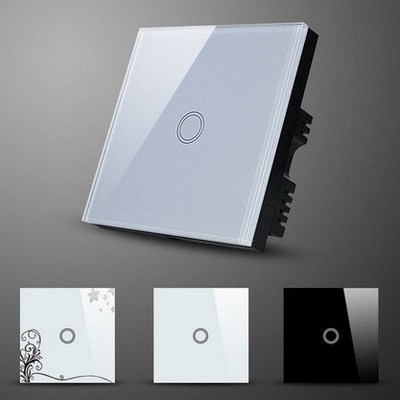
At the moment, only one drawback of such devices prevents their wide distribution - high cost. However, there is a tendency that after a certain period of time more and more complex devices appear with a simultaneous decrease in their cost.
Installation methods and device functionality
A remote-controlled switch, in addition to the simplest on-off function, allows you to control various groups of lighting fixtures, adjust their brightness and program the operation algorithm for a certain time. For example, you can program the lights to turn off at a certain hour in the morning, then the lighting will be guaranteed to be turned off for the duration of the absence of the owners of the house.
Regardless of the principle of operation, all models of remote switches differ in the method of installation and installation. Some of the devices are mounted in the lamp or in close proximity to it. There are remote control devices on sale that are screwed into place of the lighting lamp and have one or more sockets for connecting lamps.
A lamp-mounted switch might look like this:
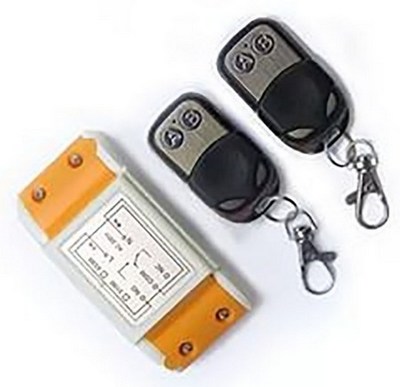
A switch with a lamp socket might look like this:
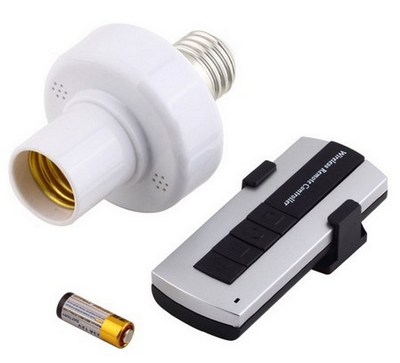
Some models are designed to be installed in place of regular switches. This method of installation is preferable because it does not require any additional work to change the electrical wiring. It is enough to dismantle the old switch and install a remote control receiver in its place using the existing wiring. These models are especially attractive in the case of an inconvenient layout of the apartment, when the existing switches are in uncomfortable places.
Usually built-in models have additional functions that allow you to control lighting without a remote control directly from the receiver. To do this, the receiver module is equipped with an additional switch of standard type or with touch control.
The combo switch might look like this:
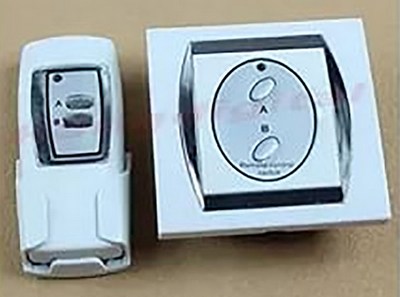
Sometimes you can find a light switch with a remote control, equipped with feedback to find the lost remote control. This function is organized by installing an additional transmitting module in the switch and receiving in the remote control. Naturally, such an addition affects the cost of the kit.
Advantages and disadvantages of various types of power circuits
The control receiver constitutes the outer part of the device. The power of the connected load is determined by the power section. For switching lighting devices, electromagnetic relays or semiconductor devices - triacs or transistors are usually used. Both options have their advantages and disadvantages.
The circuit on the relay has a low contact resistance, does not create interference and allows you to control any type of lighting fixtures, such as incandescent lamps, fluorescent lamps or LEDs. The main thing is complete galvanic isolation between the control circuit and the switched load. The most significant drawback is the burning of contacts when switching a powerful load and, as a result, the failure of the relay. This is what the relay looks like:
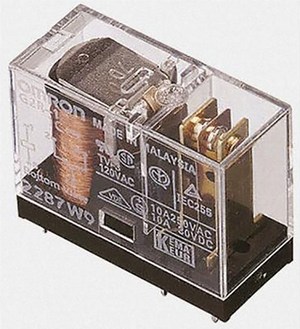
The triac circuit has no mechanical contacts, so sparks do not occur during operation. But since semiconductor elements are prone to failure if a current exceeding the nominal value passes through them, that is, they require additional protection and filtering circuits. Also, to implement galvanic isolation, additional elements are required, such as opto-triacs. The complexity of the use of triacs is rewarded by the absence of restrictions on the maximum number of switchings, in contrast to the relay, for which such a restriction can be 10000–100000, and by the noiselessness of their operation.
This is what a simulator looks like:
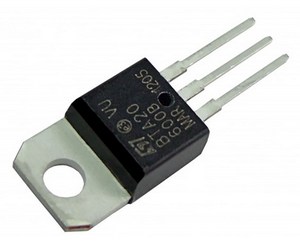
Cautions
Unfortunately, there are often light switches with a remote control on sale, produced by little-known "garage" type enterprises. Their main goal is to increase sales of goods by reducing the price at the expense of quality, based on an inexperienced consumer. Such products may have such disadvantages:
- The absence of redundant control, that is, the switch operates exclusively from the remote control.
- Inoperability with some types of lamps.
- Non-compliance of the declared technical characteristics with the real ones. This mainly concerns the range and switching power.
- Susceptibility to failure due to power surges.
- Large current consumption by the remote control circuit, which leads to frequent change of the supply battery.
- Inconsistency of the radio range of the remote control transmitter with the requirements of frequency supervision. As a result, interference to other devices may occur.
- Lack of individual coding, which leads to the operation of several switches from one remote control.
- Low quality of the element base, especially power elements - relays or triacs.
- Low culture of production, leading to the failure of the device within a short period of time.
The advantage of such products is only one - low cost. But what will the savings lead to if, in the absence of the owners, the light is constantly on in the house or, even worse, the contacts close inside the power unit.
When buying, you should make sure that the light switch with a remote control is designed to work with those lighting fixtures that you plan to switch.
Since electrical appliances must be distinguished by increased reliability, the choice must be stopped on products of well-known and proven brands. With insufficient experience in working with electrical networks, it is better to entrust the installation of switches to professionals.
Below is an example of a correct connection diagram for signal receiver to lighting fixtures:
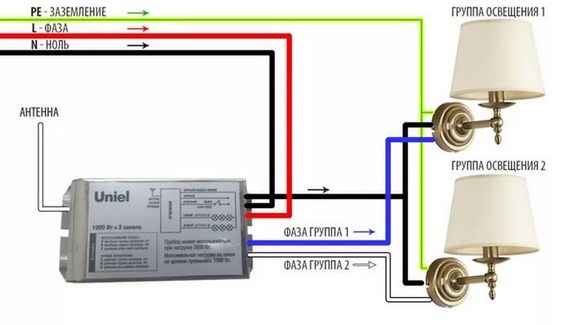
Those switches that are designed to control electronic lamps, fluorescent or LED, usually require a strict correspondence between the connection of the phase and neutral conductors. Otherwise, the device will not work correctly, and even when turned off, the lamps may ignite. The inclusion of lamps of different types in the same circuit is strictly prohibited.
Outcome
So, we have analyzed the issue of remote lighting control, having considered various types of organization of such functionality. Please indicate in the comments if this article was helpful. Also write what information you may not have had to fully understand this issue.
